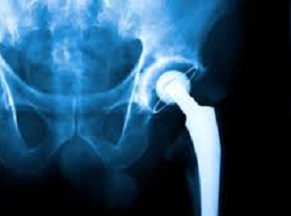Each year over 330,000 hip replacement surgeries are performed in the United States. A total hip replacement surgery, known to doctors as arthroplasty, traditionally involves cutting through most of the patient’s muscle tissue, tendons, and bone surrounding the original hip joint. An artificial hip is then anchored to the bone using a long metal spike and possibly medical-grade cement.
 While elderly Americans and athletes may require a new hip due to their natural hip being broken, most patients are undergoing hip replacement surgery to alleviate the pain of arthritis. Doctors are telling prospective patients a new hip will allow them to essentially live as they did when they were years younger before experiencing any hip trouble.
While elderly Americans and athletes may require a new hip due to their natural hip being broken, most patients are undergoing hip replacement surgery to alleviate the pain of arthritis. Doctors are telling prospective patients a new hip will allow them to essentially live as they did when they were years younger before experiencing any hip trouble.
The problem is many patients who undergo total hip replacement surgery will experience significant pain and suffering as result of defective artificial hip devices, which can loosen, deteriorate or completely fail within a short period of time following surgery.
Continue reading
 Product Liability Lawyer Blog
Product Liability Lawyer Blog








